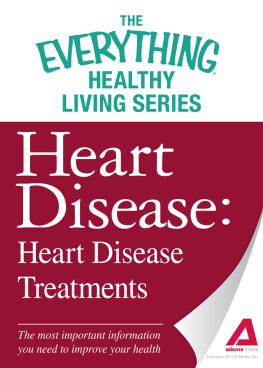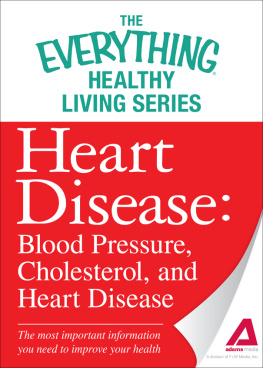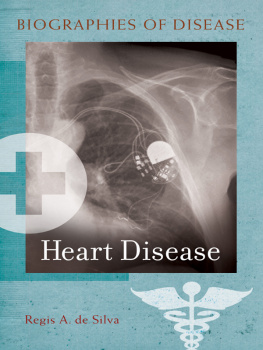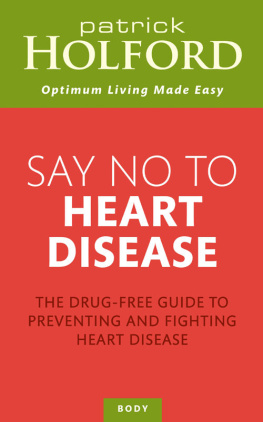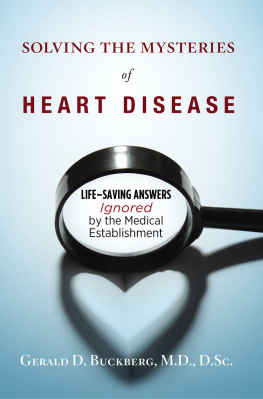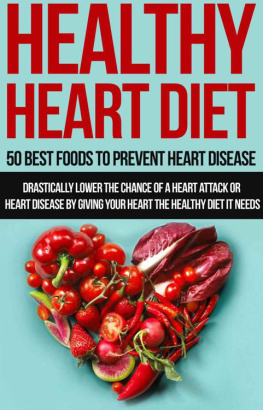Contents
Guide
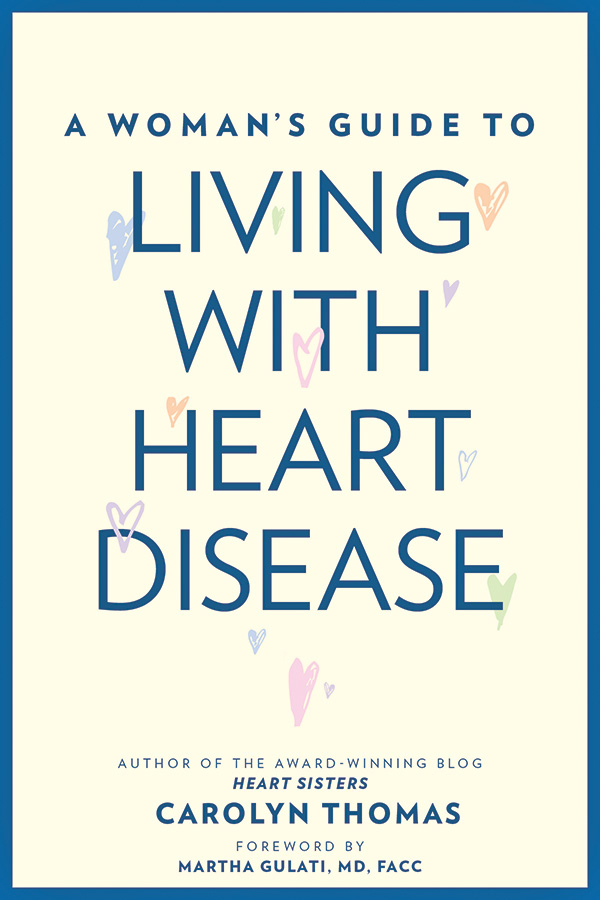
A Womans Guide to Living with Heart Disease
A Womans Guide to Living with Heart Disease
Carolyn Thomas
Foreword by Martha Gulati, MD, FACC

Johns Hopkins University Press
Baltimore
Note to the Reader: This book is not meant to substitute for medical care and treatment should not be based solely on its contents. Instead, treatment must be developed in a dialogue between the individual and her or his physician. This book has been written to help with that dialogue.
2017 Johns Hopkins University Press
All rights reserved. Published 2017
Printed in the United States of America on acid-free paper
2 4 6 8 9 7 5 3 1
Johns Hopkins University Press
2715 North Charles Street
Baltimore, Maryland 21218-4363
www.press.jhu.edu
Library of Congress Cataloging-in-Publication Data
Names: Thomas, Carolyn, 1950, author.
Title: A womans guide to living with heart disease / Carolyn Thomas.
Description: Baltimore : Johns Hopkins University Press, 2017. | Includes bibliographical references and index.
Identifiers: LCCN 2017009948| ISBN 9781421424194 (hardcover) | ISBN 1421424193 (hardcover) | ISBN 9781421424200 (paperback) | ISBN 1421424207 (paperback) | ISBN 9781421424217 (electronic) | ISBN 1421424215 (electronic)
Subjects: LCSH: Heart diseases in women. | BISAC: HEALTH & FITNESS / Diseases / Heart. | MEDICAL / Public Health. | HEALTH & FITNESS / Womens Health.
Classification: LCC RC682 .T53 2017 | DDC 616.1/20082dc23
LC record available at https://lccn.loc.gov/2017009948
A catalog record for this book is available from the British Library.
Special discounts are available for bulk purchases of this book. For more information, please contact Special Sales at 410 -- 6936 or specialsales@press.jhu.edu.
Johns Hopkins University Press uses environmentally friendly book materials, including recycled text paper that is composed of at least 30 percent post-consumer waste, whenever possible.
To my darling grandbaby, Everly Rose.
On the day you were born,
one of my Heart Sisters blog readers predicted,
This precious little child will do more good
for your heart than anything your cardiologist
could ever prescribe for you.
She was right.
Contents
Foreword
We cannot change what we are not aware of, and once we are aware, we cannot help but change.
Sheryl Sandberg, Lean In: Women, Work, and the Will to Lead
The good physician treats the disease; the great physician treats the patient who has the disease.
Sir William Osler, 1st Baronet, MDCM, FRS, FRCP
As a young medical student at the University of Toronto in Canada, I became acutely aware of the differences in how we treated men and women who presented with a heart attack. The symptoms of men were never doubted. If a man mentioned chest pain or chest pressure, a heart attack was always the first on the list of potential causes of what was going on, and the hospital team rushed to determine if the man was having a heart attack and take the next steps. Time was heart muscle! It was understood that this was the number-one killer of men. With women, I watched doctors ask more questions about the chest pain: What is going on at home, Mrs. Jones?; Are you under some stress, Ms. Smith?; What did you eat today, Ms. Black? The sense of urgency was rarely seen. Even when a woman had classic symptoms of a heart attack, rather than rushing to get an ECG or taking her straight to the cardiac cath lab, I saw doctors delay the treatment to make sure stress, anxiety, or reflux was not the cause of her symptoms. This delay, despite the fact that heart disease was also the number-one killer of women.
This behavior shocked me, because I was very aware that heart disease and strokes had taken the lives of women in my family. I became convinced that womens symptoms were taken less seriously by doctors, and the emerging evidence at the time supported that conclusion. Women who had heart attacks were less likely to get guideline-recommended therapies, less likely to receive timely care, less likely to undergo any revascularization, and more likely to die than men. I began to think about what would happen to me, my sister, my cousins, and my girlfriends. What would happen to us if we ultimately had a heart attack? Why would we, just because we are women, be treated so differently? Suddenly I knew what my mission had to be: I was going to have to be a cardiologist who cared exclusively for women and who studied heart disease in women, if I was to be part of the change.
I have now had the honor and privilege to care for women and their hearts for many years. And I hope I have been part of the change in caring for women. Nonetheless, we are still at the infancy of understanding womens hearts and the impact of heart disease on the lives of women affected by this disease. It remains both of interest and of concern to me that heart disease is still underappreciated both by women and by physicians.
Additionally, it remains a secret disease for many women; unlike breast cancer, heart disease is rarely discussed, despite the enormity of the disease and its impact on women. The perception that a woman is to be blamed for a heart attack is one of many reasons women are often silent after a heart attack, despite the fact that many risk factors for heart disease overlap with risk factors for breast cancer. It still is often thought of as a mans disease despite all the marketing, education, and public awareness campaigns driven toward educating women about their risk of the greatest killer.
We continue to see gender gaps in the treatment and management of heart disease and stroke, with persistently worse outcomes and higher mortality in women, particularly younger women, compared to men. We continue to have gender gaps in the enrollment of women in cardiovascular trials. Only recently was it mandated that cellular research and animal studies include both sexes, where again, the female sex has often been excluded. So there is much more work to do in both helping women understand that they are at risk for heart disease, as well as improving the education of physicians in order to close this gender gap in heart disease outcomes. And further, we need to continue to advocate for more research to be done on women and their hearts so we can become better at preventing and treating heart disease in women.
A Womans Guide to Living with Heart Disease is an excellent book that will not only benefit any woman living with heart disease, but also physicians and other health professionals caring for women. It gives a unique perspective on heart disease that has really not been heard until nowthe patients perspective. Carolyn Thomas is a woman who lives with heart disease. As a result of her personal experience, she has become the voice of many patients in the world through her blog, her writings, her public speaking, and now through this book. As a woman who experienced a heart attack, was misdiagnosed, and deals with everything that living with heart disease entails, Carolyn uses humor wrapped in practicality and common sense to help women navigate their disease and all the overwhelming emotions that come with this diagnosis. Additionally, she has provided useful information for health care teams to appreciate what patients need and expect from their practitioners. To paraphrase the above quote from Osler, the great physician will treat not just the disease but the patient. As a physician, I feel that that is also the message Carolyn sends to us. And it is an important one for the health care team to remember.


